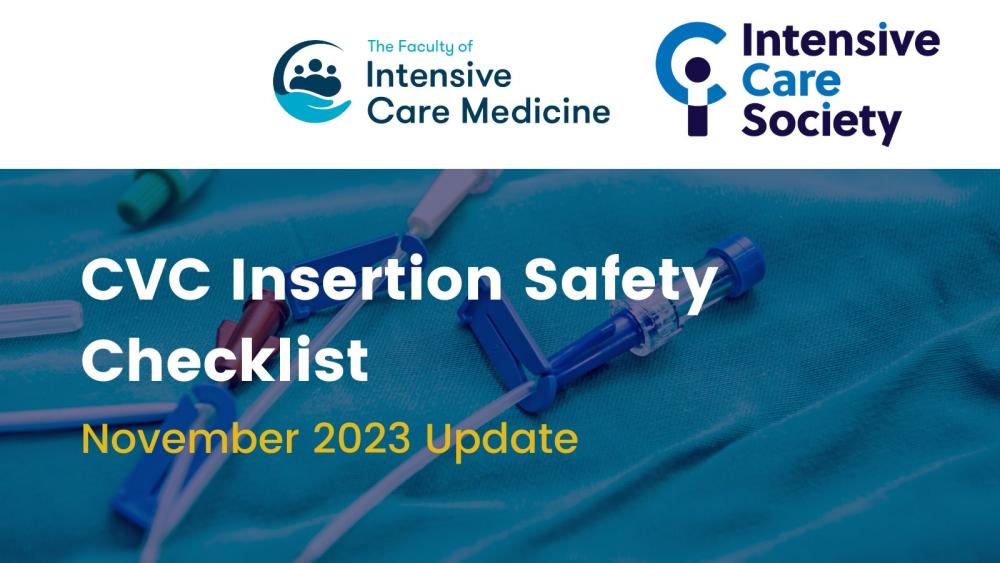CVC Insertion Safety Checklist 2023

The Faculty of Intensive Care Medicine and the Intensive Care Society have published an update to the Invasive Procedure Safety Checklist on CVC Insertion. The new version takes into account learning from patient safety incidents reported nationally and was developed acknowledging the publication of the NatSSIPs 2.
Background
The Central Venous Catheter Insertion Checklist (2017) is based on the formats described for the National Safety Standards for Invasive Procedures (NatSSIP) and the ability for it to be adapted for local use.
The aim was to improve safety and reduce incidents related to the insertion of central venous catheters, which is a common procedure undertaken in Critical Care Units.
The new update (2023) takes into account learning from patient safety incidents reported nationally, mainly related to inadvertent arterial placement of these lines, which are associated with significant morbidity and mortality.
To put it into context, here is a case example of a reported incident:
A 66 year old male was admitted to the Critical Care Unit following an emergency laparotomy for small bowel obstruction. An arterial line and right internal jugular central venous catheter (CVC) were inserted at induction of anaesthesia. The insertion was documented as “easy insertion, no complications”. He was transferred to the Critical Care Unit following extubation. The CVC had not needed to be used at this point. Over the first night, he became hypotensive and required noradrenaline. He commenced total parenteral nutrition on the day following surgery due to a prolonged period with minimal oral intake and ongoing ileus. No initial concerns were noted with the CVC. On day two post operatively he developed some neurological signs and symptoms. Initially dysarthria and drowsiness, that then progressed to a reduction in conscious level with abnormal posturing. A CT scan of his brain revealed diffuse ischaemia of the right cerebral hemisphere. The central line was then transduced and revealed an arterial pressure waveform.
Changes to the Checklist
Several key changes have been made. The key change being that all Central Venous Catheters should be transduced prior to their use. An appropriate central venous waveform and pressure reading should be seen.
Other incidents related to the integrity of the line have been reported (namely incorrect bungs that are not sealed used on the lumens). This risks an air embolus developing, so checking integrity of line and ensuring correct equipment is also included.
The publication of NatSIPPs 2 has been acknowledged during the update of this document. The CVC insertion LocSIPPs is a speciality specific checklist, has been risk assessed and agreed by the Intensive Care Society and the Faculty of Intensive Care Medicine. It encompasses many relevant necessary points from the updated NatSIPPs 2. It is being published now to help improve the safety of this common procedure and reduce complications that carry a significant associated morbidity and mortality.
